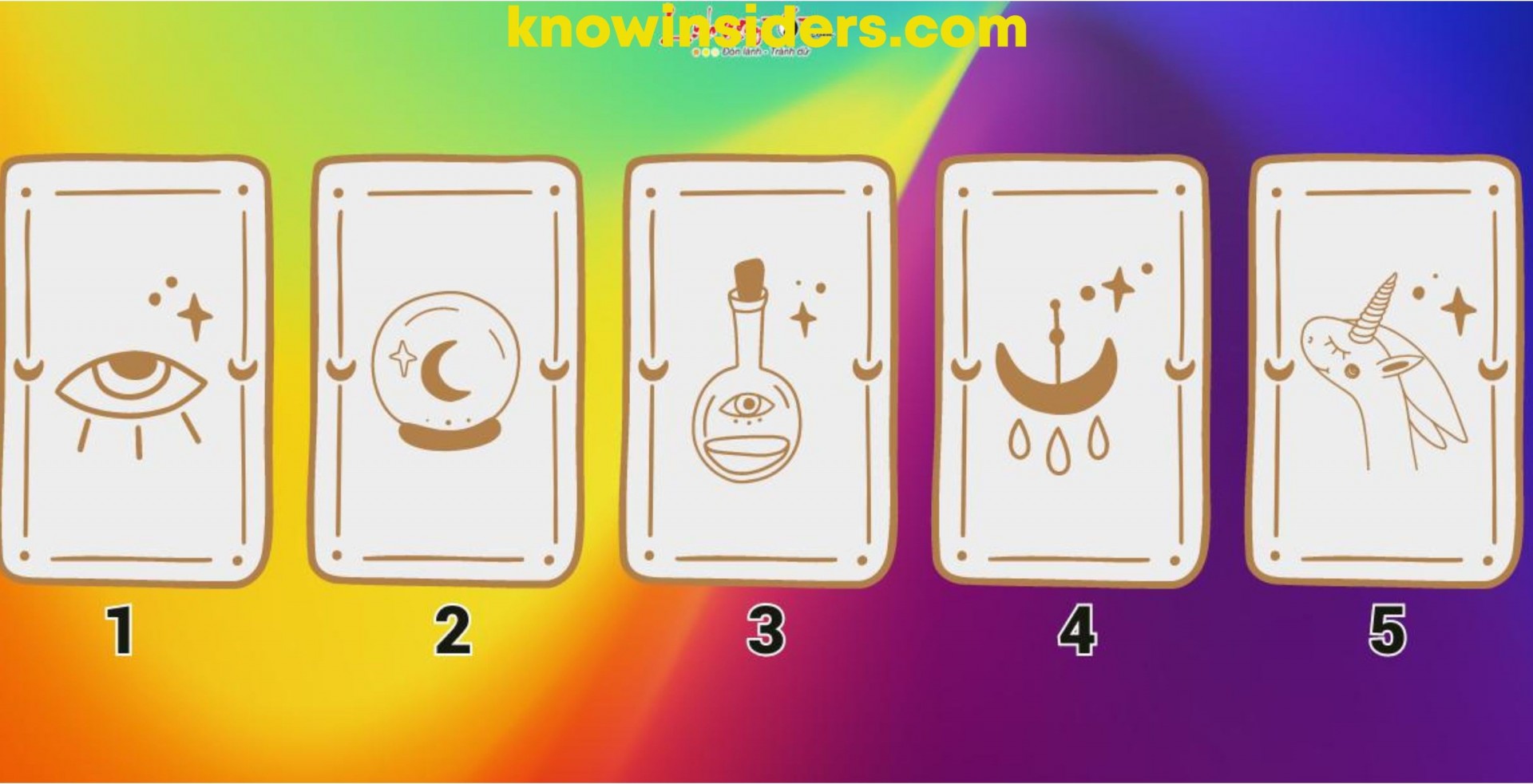Who Are On Canadian Money - Banknotes and Coins
 |
| Who Are On Canadian Money Of All Time. Photo Getty |
| Contents |
Almost all countries in the world use their own currencies which reflect values of trade, history and identical culture of each nation. Canada is the same. Let’s find out who and what on Canadian money.
History of Canadian Money
Due to the spread of the so-called Spanish dollar, or peso, throughout North America in the late XVIII and early XIX centuries, as well as the standardization of the American dollar, Canada chose to abandon the use of the sterling pound in favor of the dollar. While the Atlantic colonies, which had closer ties to the United Kingdom, were less in favor of the dollar, the Québec region was a true proponent of its use (the Bank of Montreal issued banknotes in dollars in 1817).
In January 1858, the province of Canada issued an order for the issuance of the first official Canadian dollars and declared that all accounts would be settled in US dollars. In the years that followed, the colonies—which would shortly become a part of the Canadian Confederation—gradually shifted to using a decimal system.
In April 1871, the Uniform Currency Act was finally approved by the government, uniting all of the provinces' currencies under a single Canadian dollar. On April 10, 1933, the golden standard was formally abolished.
• Current Canadian dollar coins and banknotes
• Today, we have banknotes of 5, 10, 20, 50 and 100 dollars.
• Regarding coins, there are 1, 5, 10, 25 and 50 cent, and 1 and 2 dollars.
Who are on Canadian Banknotes?
Five Dollar Bill - Sir Wilfrid Laurier And The Canadarm2
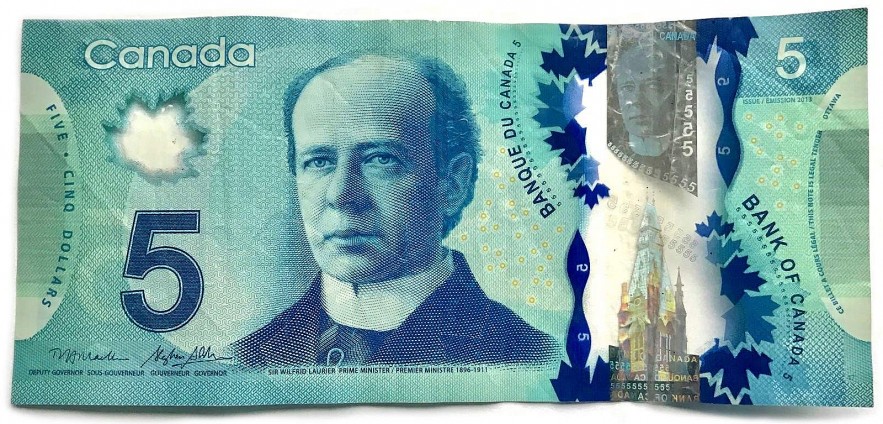 |
| Photo The Canada Guide |
The Bank of Canada issues banknotes in various denominations, with the five-dollar note being the most popular and lowest denomination.
For half a century, the nation's sky blue five-dollar bank note has featured Sir Wilfrid Laurier, the seventh prime minister of Canada.
Laurier, who is also the namesake of Wilfrid Laurier University, a number of other schools, streets, and locations, made his debut in 1972. However, his days as the “face of the fiver” are drawing to an end. The eight candidates on the shortlist to succeed him, chosen by an impartial federal advisory council, will be announced within the next few years. According to the most recent survey conducted by the nonprofit Angus Reid Institute, Terry Fox is the front-runner with the highest percentage of Canadians (57%) selecting him over the other seven contenders.
Ten Dollar Bill - Viola Desmond And The Canadian Museum For Human Rights
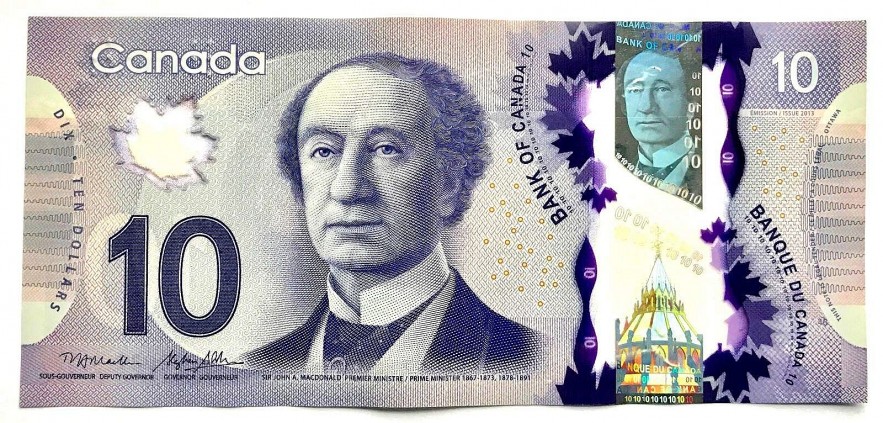 |
| Photo The Canada Guide |
A prosperous black businesswoman named Viola Desmond was imprisoned, found guilty, and fined in 1946 for her resolute refusal to leave a section of a movie theater reserved for white people. The fight for racial equality in Canada was spurred by her legal case. Viola's narrative is housed in the Canadian Museum for Human Rights' permanent collection.
The banknote defeated top designs from nations like Switzerland, Norway, Russia, and the Solomon Islands to win the prestigious Bank Note of the Year Award for 2018.
Despite the fact that Desmond's act of defiance occurred nine years prior to Parks' refusal to give up her seat on an Alabama bus, Desmond is frequently referred to as Canada's Rosa Parks.
Though Desmond's groundbreaking work was largely overlooked until recently, her legacy is now more widely acknowledged. Today, there are streets named after her, a children's book, a commemorative coin, a Halifax Transit harbor ferry, and a Canada Post stamp bearing her name.
READ MORE: ONLY in CANADA: 9 Crazy Things You Should Know
Twenty Dollar Bill – Queen Elizabeth II And The National Vimy Memorial
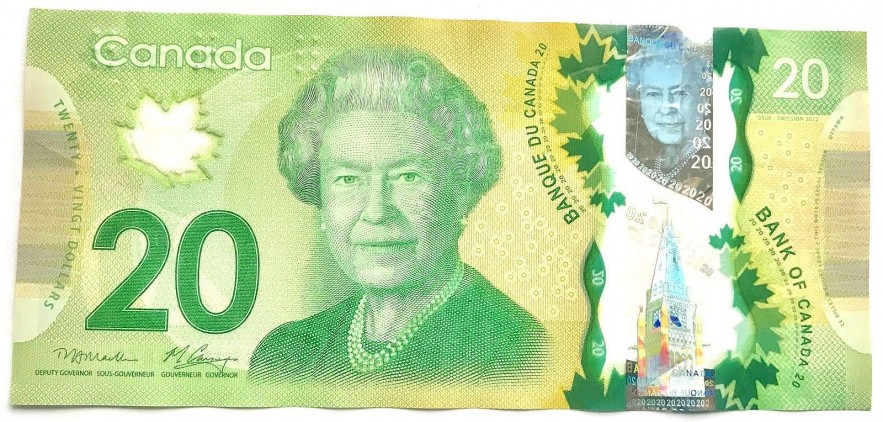 |
| Photo The Canada Guide |
Elizabeth's likeness appears on the reverse of coins and the 2011-introduced C$20 ($15.28) bank notes made of plastic. The central bank stated that those notes will stay in circulation and that the decision to print new notes with the image of her successor, King Charles III, rests with the government of Prime Minister Justin Trudeau.
Will Charles III replace Queen Elizabeth on Canadian money anytime soon?The Royal Canadian Mint is expected to start replacing coins and paper money with the new monarch as soon as the previous one passes away. The current banknotes featuring Charles' image will be gradually phased out of circulation in place of the old ones rather than being replaced instantly. The republicans are already working to have the monarch removed from banknotes and stamps, but this will also happen to stamps, as reported in a Toronto Sun article. Britain and a few other nations, such as Australia, New Zealand, and Caribbean island states governed by the Eastern Caribbean Central Bank, will also need to decide whether to replace the Queen with new images on their coins and banknotes. None have made any immediate plans public as of yet. However, according to Anastakis, altering the image on our currency is more than just a way to honor a new sovereign—it's also a way to commemorate the historical moment we're currently living through. Wayne Adam of Canada's Republic Now was quoted in the Sun in 2016 as saying, "The stamps and coins of an independent nation on the eve of its 150th anniversary should celebrate its own people and achievements, not those living in the palaces of a foreign nation." The Queen, who is depicted on the obverse of the majority of Canadian coins, is not a better candidate, according to the group, than the nation's current prime minister. She faces right on coins every time. In keeping with a custom that dates back to Charles II's reign, Charles will face left. The direction that the monarch faces on a coin is reversed each time they change. Stamps don't experience the same thing. |
The 20 dollar bill wins the 2004 “Banknote of the Year”The most cutting-edge features in currency security were present in the 2004 release of the "Canadian Journey Series," which was a 20-dollar bill from Canada. The front of the bill is adorned with a portrait of Queen Elizabeth II. On the other side is artwork that draws inspiration from the Haida culture of Canada's Pacific coast. The 2004 Banknote of the Year award was given by the International Banknote Society to the Canadian 20 dollar bill. The same honor was given to the Viola Desmond Canadian $10 in 2018. |
Fifty Dollar Bill - William Lyon Mackenzie King And A Map Of Canada's North
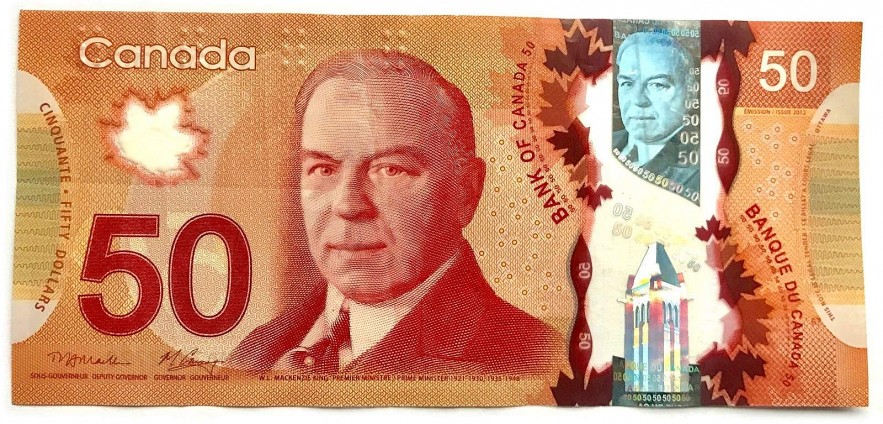 |
| Photo The Canada Guide |
The $50 note was released in November 2004 and features a portrait of Prime Minister Mackenzie King that was created using computer-assisted engraving in Germany by Giesecke & Devrient, a security printer that is the parent company of BA International Inc. and has subsidiaries all over the world.
This was the first instance of the portrait being engraved on a
Canadian bank note, though this was how some of the series' previous notes had been made.
The note's center features the Peace Tower. The note's reverse side highlights the theme of nation-building and highlights the achievements of women who have advocated for social justice and equal rights.
The Thérèse Casgrain Volunteer Award medallion and the Famous Five statues that can be found in Olympic Plaza and on Parliament Hill in Calgary, Alberta, are both shown. The highlighted passage is taken from the Universal Declaration of Human Rights, whose original draft was authored by John Peters Humphrey of New Brunswick.
One Hundred Dollar Bill- Robert Borden And A DNA Double Helix, And A Vial Of Insulin
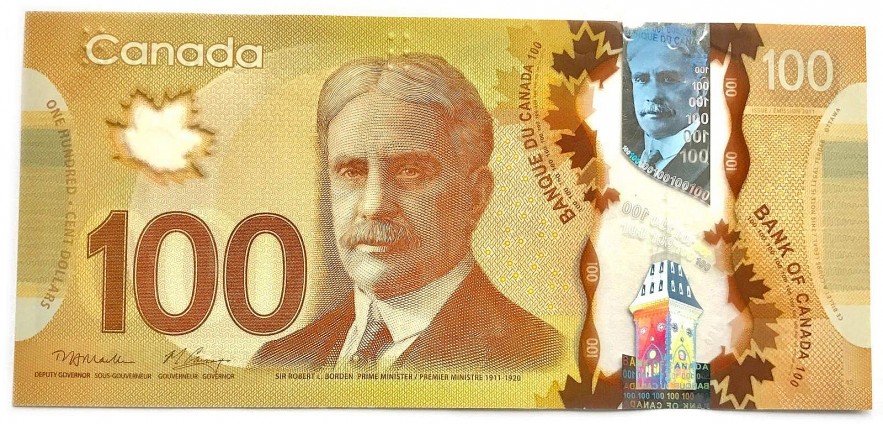 |
| Photo The Canada Guide |
Canada's eighth prime minister, Sir Robert Borden, guided his nation through the First World War, a very trying time. Borden played a pivotal role in uniting the nation during a conflict that had never before occurred on a global scale.
The structure: Architects Thomas Stent and Augustus Laver, of the East and West Blocks, created the elaborate and sophisticated structures, which are praised as magnificent representations of the Gothic Revival style. The $100 note features the East Block tower, which was completed in the mid-1860s.
For the first 100 years of its existence, Canada's government was centered on the East Block. Notable Canadians who held offices in this building include Sir John A. Macdonald, the country's first prime minister, and Sir George-Étienne Cartier, a fellow Father of Confederation.
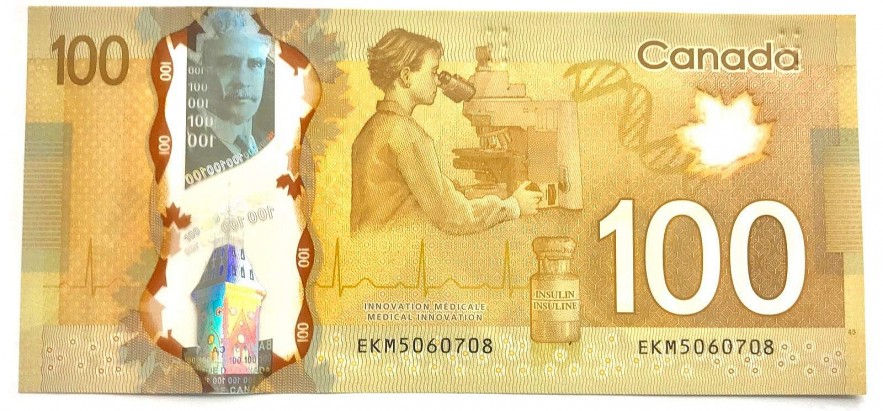 |
| Photo The Canada Guide |
Researcher at a Microscope
A scientist wearing a lab coat studying under a microscope illustrates Canada's enduring dedication to medical innovation and research. The microscope's image is based on an imaging Carl Zeiss Axioplan 2 microscope, which is used globally for state-of-the-art medical research. Since 1846, Zeiss has been producing high-precision optics and mechanics.
Insulin
One of the most well-known medical inventions from Canada is insulin. This picture, which dates to 1923, shows an extremely primitive insulin bottle. In 1921, Canadian medical researchers Frederick Banting and Charles Best made the discovery that insulin could be used to treat diabetes. Many people forget that, until the discovery of insulin, diabetes was considered fatal. Insulin continues to save millions of lives today and was revolutionary in its day.
DNA Strand
DNA, or deoxyribonucleic acid, is the genetic code that makes life possible. In this area of medical science, the researchers who have pioneered the mapping of our human genetic makeup are honored by the DNA strand on the $100 bill. A group of scientists created this illustration for the Bank and modified it for the layout. It's not intended to highlight any specific DNA structure component. The stylized DNA strand on the $100 note speaks to the future of medical innovation, while other design elements honor Canada's medical research history.
Electrocardiogram
The 1950 pacemaker invention by John Hopps is one of Canada's contributions to heart health, represented by this image of an ECG. The ECG track displayed here displays the kind of pattern typical of a human heart in good health.
Canadian cardiac surgeons Drs. Wilfred G. Bigelow and John C. Callaghan developed cold heart surgery techniques in the 1940s. Through experimentation, they found that if they applied a tiny electrical charge to the heart, it would beat more vigorously and could be kept beating at the proper pace if done on a regular basis. After that, Bigelow and Callaghan brought in electrical engineer John Hopps to help them create the first pacemaker ever made.
Who are on Canadian Coins?
Loonie (one dollar)
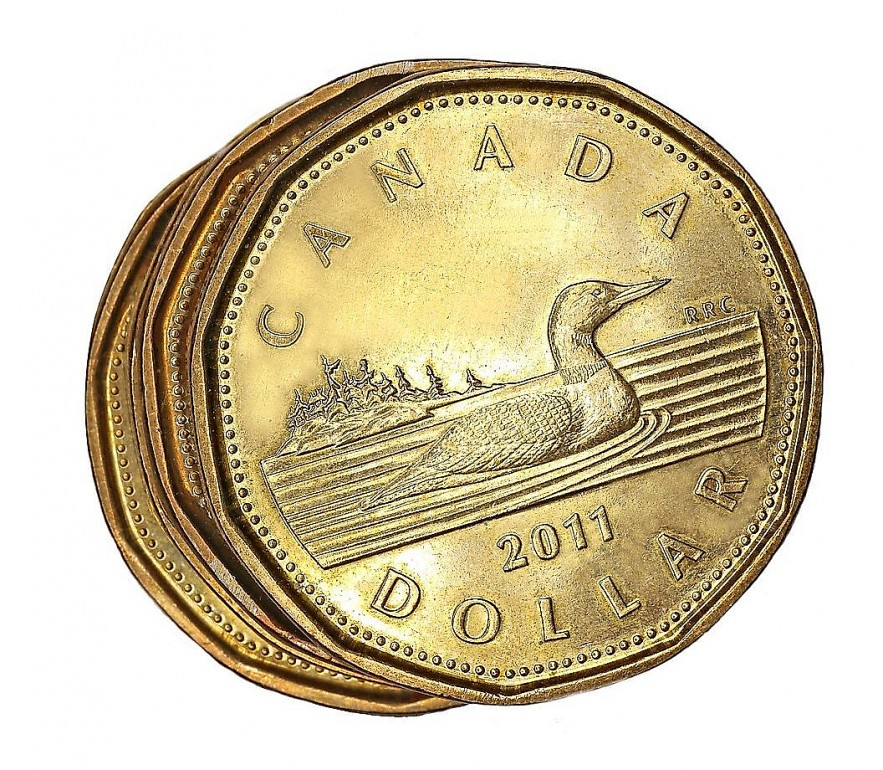 |
| Photo World Atlas |
The Loonie is a big nickel coin with a gold hue. The dollar bill was phased out in the 1980s, though it was once legal tender. Because it features a picture of the loon, Canada's national bird, the coin is known as a "Loonie."
Toonie (two dollars)
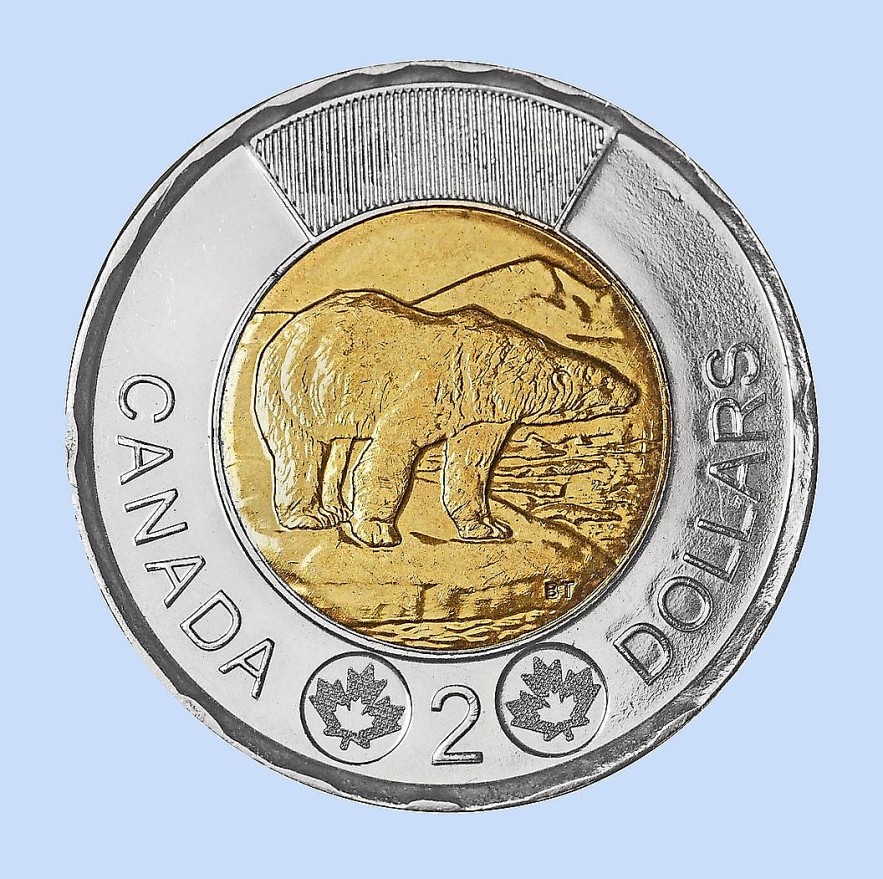 |
| Photo World Atlas |
The Toonie or Twoonie is a distinctive-looking coin made of two different colours of metal. It replaced the old two dollar bill in the mid-nineties. It has a polar bear on it.
Quarter (25 cents)
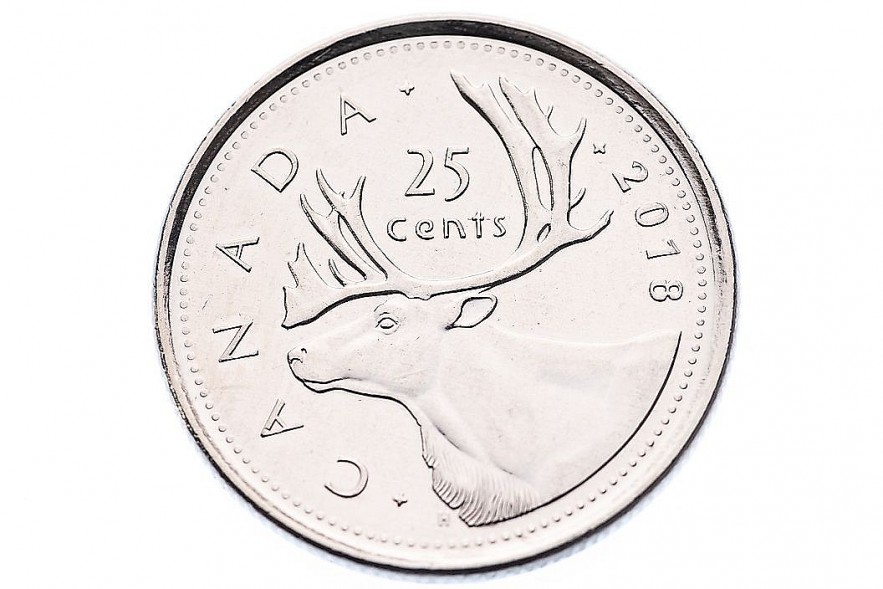 |
| Photo World Atlas |
The "Quarter" (so named because it's worth a quarter of a dollar) is a silver-coloured 25 cent piece. It depicts a caribou, one of Canada’s beloved antlered animals.
Dime (10 cents)
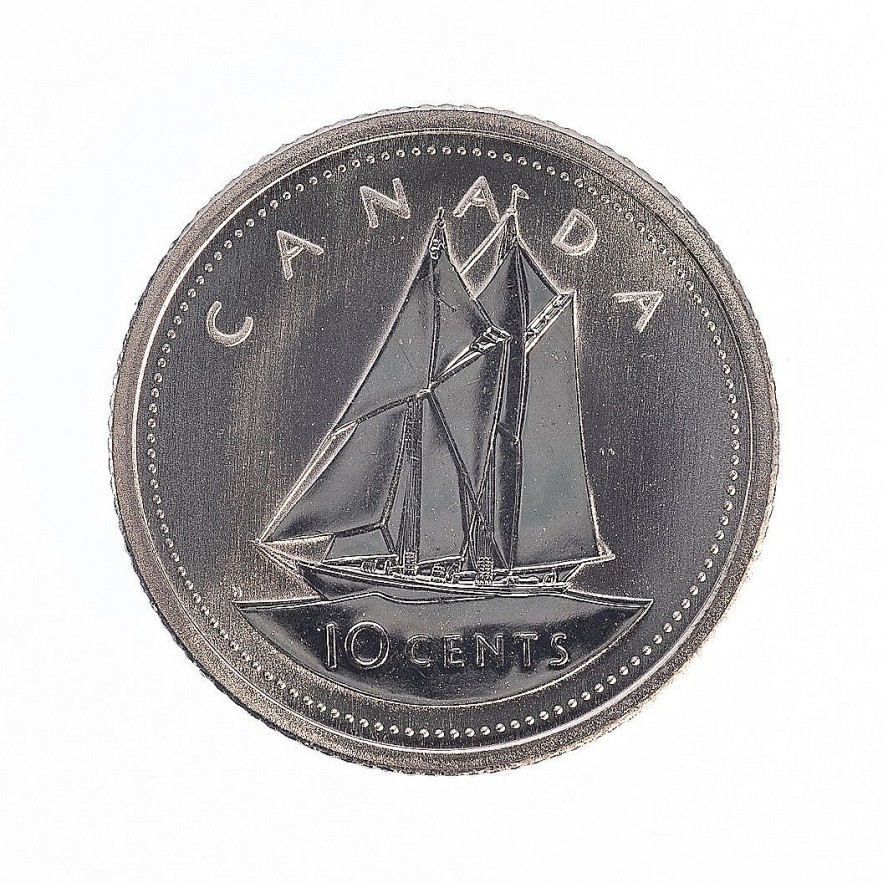 |
| Photo World Atlas |
The 10 cent piece is also known as the "Dime". It's the thinnest coin in terms of size. The Bluenose, a well-known Canadian sailboat, was the fastest racing ship in the world for nearly 20 years.
Nickel (five cents)
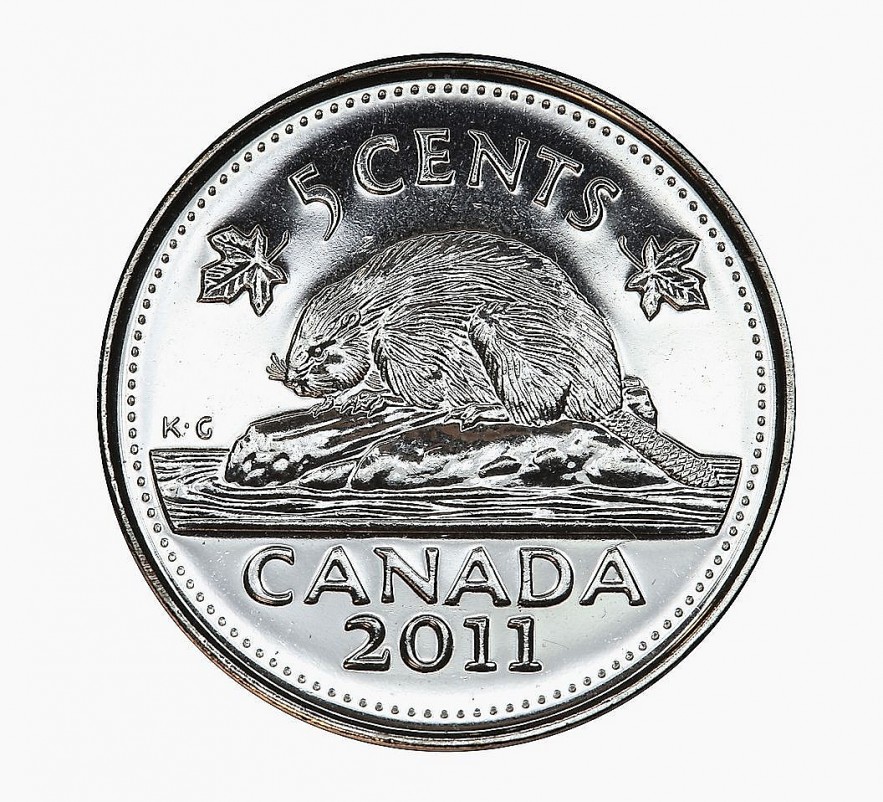 |
| Photo World Atlas |
The "Nickel" is what they call the 5 cent piece. It’s actually larger than the dime, which can be confusing. At one time, five cent pieces were made of nickel (hence the name), but today they're made of steel.
Penny (one cent)
The copper-plated steel penny is adorned with the maple leaf, a widely recognized emblem of Canada. The Canadian government formally stopped producing pennies in 2013 and is presently working to remove them from circulation, although this project won't be finished for many years. In Canada, larger stores and chains might not take pennies and instead ask that clients round their cash payments to the nearest five cents.
In conclusion, one of the most valuable currencies in the world is the Canadian dollar. Coins and notes from Canada feature images that pay homage to the nation's rich history and culture. It's a good idea to find out what and who is worth Canadian money if you want to learn more about the country's history and culture.
 Top 7 Cryptocurrencies By Market Cap This Week Top 7 Cryptocurrencies By Market Cap This Week The market has been hit by a major shock this week as Bitcoin witnessed a sudden plummet. What are 7 cryptocurrencies with biggest market caps ... |
 10 Cheapest And Potential Cryptocurrencies To Buy In 2022 10 Cheapest And Potential Cryptocurrencies To Buy In 2022 Check out the list of the top 10 cheapest and potential cryptocurrencies you should buy in 2022. |
 What Are the Most Popular Cryptocurrencies In The UK? What Are the Most Popular Cryptocurrencies In The UK? Check out the top 10 most popular cryptos and how you can trade cryptocurrency in the UK. |




